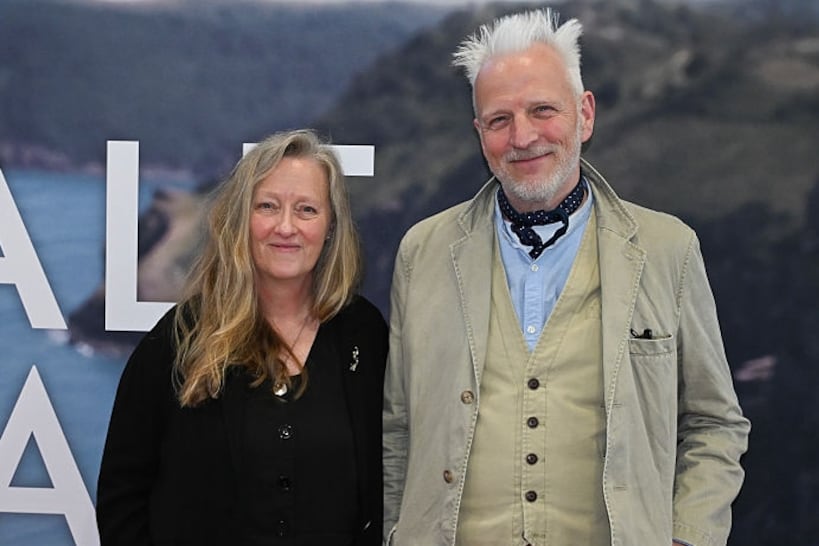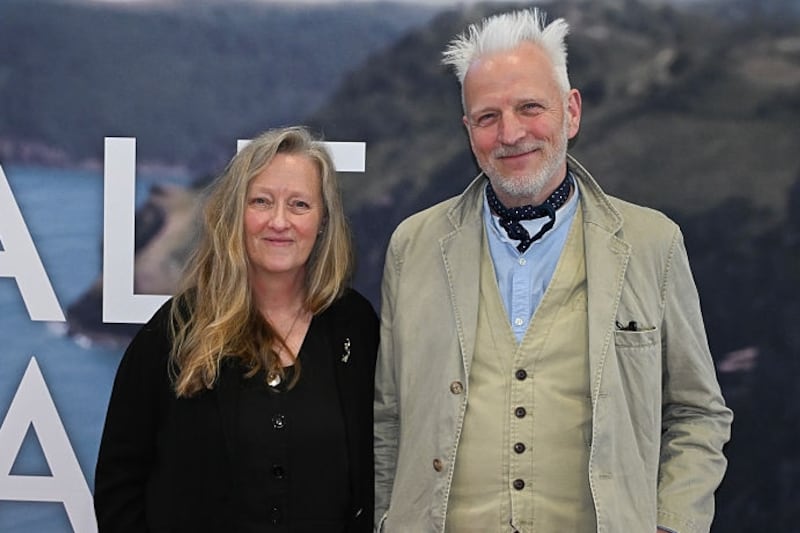It is a smell that reminds Joe Doherty of the illegal poitín he once made in prison.
Standing in front of three enormous whiskey stills in Belfast’s newest distillery, the former IRA man looks up and points to the spot where he attempted his first jail break more than 50 years ago.
“It took us six weeks to cut through those bars,” he says. “Me and a guy from Co Clare blackened our faces and went out the window at three o’clock in the morning ... We got caught going over the wall.”
Doherty is on the second floor of the old A-Wing in the former Crumlin Road Gaol in the north of the city, where he was imprisoned three times during the Troubles.
READ MORE
In 1981, his face appeared on “Wanted” posters at airports and train stations after he and seven other IRA prisoners escaped from “The Crum” dressed as prison guards and solicitors.

A dramatic daytime shoot-out outside the Victorian jail led him to flee to the United States a year later; a street corner is named after him in New York. He was arrested in 1983 serving beer to three FBI agents in Clancy’s Bar in Manhattan.
Today, the 69-year-old community worker watches “master distiller” Graeme Millar pop open a brass cuboid box and rubs clear liquid on his hand.
“You can get the waft; it’s a strong, fruity aroma,” says Millar.
He roars with laughter when Doherty says it reminds him of “Long Kesh poitín”.
In that prison on the outskirts of Lisburn, he recalls putting a raspberry or gobstopper in to add flavour.
“My ma used to smuggle a couple a pair of nylons in and then you’d strain it out ... I was a plumber and did all the piping. I’d be up all night sitting watching it go drip, drip, drip,” he says. “I wished it had come out like that, though.”
Crumlin Road Gaol, once dubbed “Europe’s Alcatraz”, was constructed during 1846-1850, and housed more than 25,000 prisoners, including suffragettes, Éamon de Valera, Rev Ian Paisley and Gerry Adams. It closed in 1996. Seventeen men were hanged there, the last in 1961; 15 of the bodies are buried in unconsecrated graves within the prison walls.
The adjoining C-Wing opened as a tourist attraction in 2007 and became an instant hit with overseas visitors fascinated by the city’s “terror trail”.
“You’ve just missed four big buses full of Americans, there were hundreds of them. There’s 60,000-70,000 people come through here a year. It’s amazing,” says Doherty, greeting The Irish Times in the former A-Wing yard and garden that is now a car park.
The former prisoner was sentenced in absentia to life imprisonment two days after the 1981 escape for his role in the murder of the most senior ranking SAS officer to be killed in Northern Ireland’s conflict, Capt Herbert Westmacott. He has given joint talks with loyalists to youth groups in the prison and previously did tours.
Doherty was released from Maze/Long Kesh prison after serving out the remainder of his sentence following his deportation from the United States in 1992. He was released in 1998 under the terms of the Good Friday Agreement.
Doherty blesses himself every time he passes the row of houses where Westmacott was killed in a gun battle between the SAS and the IRA on the Antrim Road in 1980.
“Some people say to me: ‘Why are you doing that?’ I tell them; I’m blessing his soul. At the end of the day, he was a victim of the conflict as well,” he says.
At the height of the Troubles some 2,000 republicans and loyalists were imprisoned or remanded in the imposing grey basalt building, often four to a cell.
“It was dog eat dog,” says former loyalist prisoner Colin Halliday, who was remanded in the former C-Wing for 10 months in 1991.
Halliday was a member of the Ulster Defence Association and has delivered post-conflict talks with Doherty in the prison.
“At that time, you were locked up 23 hours a day every second day; the republicans got out the other day. You ate in the cell, you slept in the cell, you went to the toilet in the cell. You were lucky you got showered once a week,” says Halliday.
“It was 24 hours a day of hatred. When I was there, two loyalist prisoners were murdered in the canteen when a bomb exploded on a Sunday afternoon. That’s how bad it was.”
[ An Irishman’s Diary about two escapees from Crumlin Road GaolOpens in new window ]
The new McConnell’s Irish Whiskey distillery opened at the end of March – 1,800 people have already visited – following a £30 million (€35 million) investment and seven years of planning.
In just over 20 months, it has been transformed from a pigeon infested, derelict republican wing of the jail to the largest Irish whiskey-making operation seen in Belfast since the late 1930s.
On A-Wing’s third floor, Doherty can’t believe his former cell is between a new 16-seater cocktail bar and conference room. “Look at how it’s transformed itself – it’s really strange,” he says.
The idea for a distillery was proposed by Belfast lottery winner and bus driver Peter Lavery more than a decade ago; Lavery went on to help establish Titanic Distillers, which opened in Belfast’s Titanic Quarter last year.
It wasn’t until a group of American investors, known as the Belfast Distillery Company, submitted planning application in 2019 for Crumlin Road Gaol that the idea began to gain traction again with its $20 million investment; four years ago, the US company relaunched the McConnell’s Whiskey brand, whose Belfast roots date from 1776.
Some original numbers remained on the old cell doors when the company acquired the building, which Millar says he painstakingly tried to match up.
“We have installed this 30-tonne malt silo – this is standard distillery equipment but it’s not located in any other place like this on the planet,” he says.
The stills can make 610,000 litres of “new make” spirit but will “not find a way to the bottle” until five years at least, says John Kelly, chief executive of McConnell’s, who went to St Malachy’s school behind the prison walls in the 1980s.
“We would have the capacity to make enough for four million bottles a year and hope to employ 50 people,” he says.
The north Belfast man admits he got “goosebumps” when he stood outside the jail after agreeing to head the project, which included the working distillery and visitor centre.
“I thought: ‘My god, 40 years later, I have come across the wall from St Malachy’s into the actual prison itself,’” he says.
He felt the day the bottles, pictures and trays were put into the new building was “like a milestone”.
US Special Economic Envoy Joe Kennedy, First Minster Michelle O’Neill and three other Stormont Ministers attended last month’s official opening; about £2 million has been given to the project in government grants.
As this reporter leaves the distillery, a bus full of tourists from Tennessee stream in for their prebooked whiskey tour.
For Colin Halliday, the “horrors” of the prison shouldn’t be forgotten. “I’m sure there has to be a better place for a distillery than the Crumlin Road Gaol; this is my personal view. I understand that it will create employment for people and contribute to the economy, but I think it should be remembered for what it was and what happened on those wings,” he says.
Glancing up at the Grade A listed building, Doherty thinks the project “can only be a good thing” and that two unused wings could be used for another purpose.
“It’s giving people work and brings them into the city; we used to blow factories up, now Sinn Féin are getting businesses to come in here – and this distillery is a business,” he says.
Visitors can also “come and reflect on once upon a time when people were imprisoned here”.
- Sign up for push alerts and have the best news, analysis and comment delivered directly to your phone
- Find The Irish Times on WhatsApp and stay up to date
- Our In The News podcast is now published daily – Find the latest episode here
















